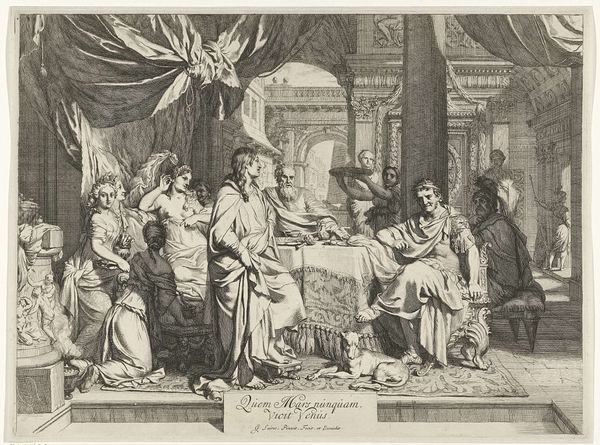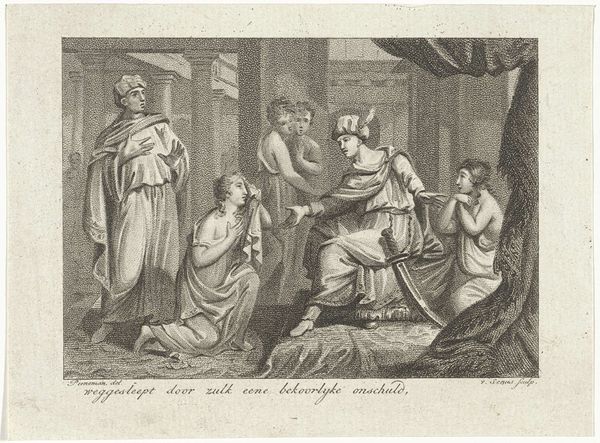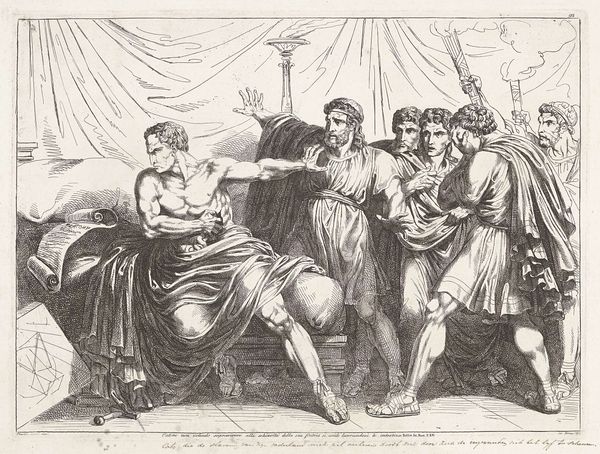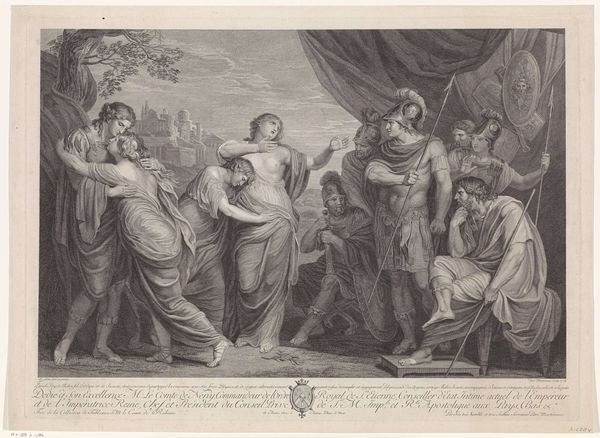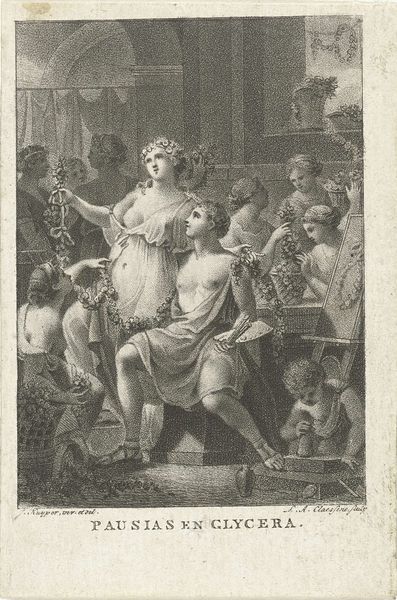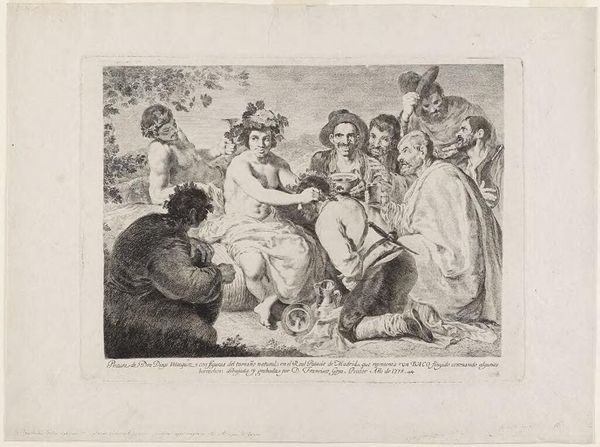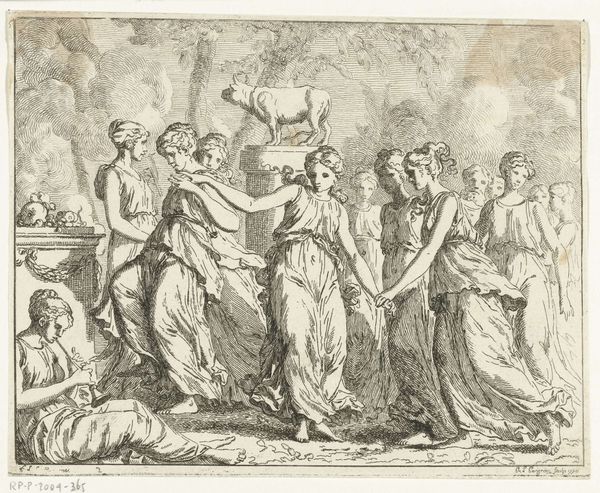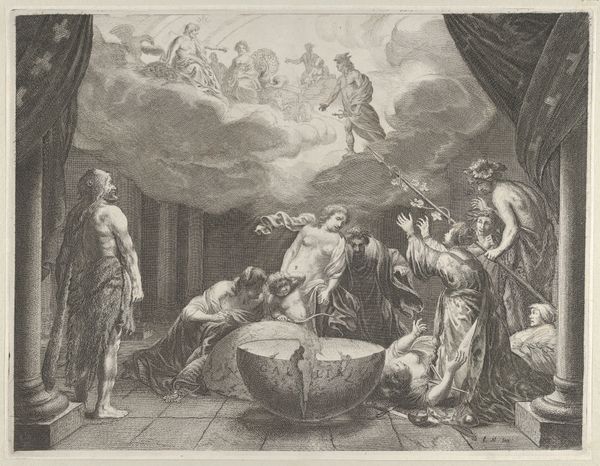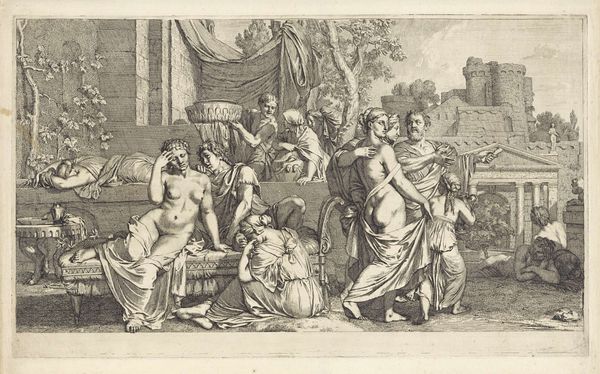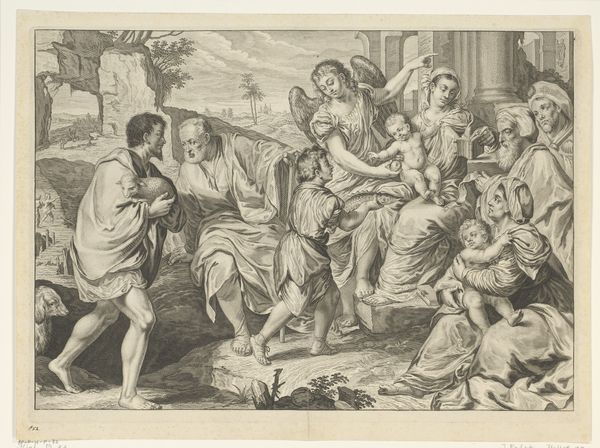
print, engraving
#
neoclacissism
#
narrative-art
# print
#
figuration
#
genre-painting
#
history-painting
#
engraving
Dimensions: height 99 mm, width 137 mm
Copyright: Rijks Museum: Open Domain
Curator: This engraving, made in 1811 by Willem van Senus, is entitled "Feestend gezelschap voor een vorst," or "Festive Company Before a Prince." Editor: Immediately, the eye is drawn to the contrast of meticulous detail in the foreground figures against the blur of the background revellers. The printmaker’s tool truly shines when rendering fabric! Curator: The artwork is an interesting example of neoclassicism in print form, attempting to emulate a style popular during the first French Empire. We see allusions to Greco-Roman motifs in dress, architecture and even social life, like a history-painting recontextualized in 19th century. Editor: Observe how the rigid, almost architectural lines of the seated figure contrast against the swooping gestures of the serving figures. Does this formal language denote authority, placing one figure above the chaos surrounding him? Curator: In some ways, certainly. The scene itself represents an imagined royal audience, probably conceived to appeal to the Empire. What's especially relevant here is how neoclassical artists used these motifs to elevate and legitimize contemporary events. Editor: Is there then a political agenda present? Look at how effectively Senus utilized light and shadow to orchestrate this theatrical set. The viewer’s eye is subtly directed across various social cues: offering drinks, a loaded basket. A very efficient use of stagecraft and spatial logic, creating an engaging but ultimately ambiguous story. Curator: Yes, prints such as these held considerable influence at the time. They could widely disseminate imperial ideology, promoting certain values or presenting a particular view of history to the bourgeoisie. It also echoes ancient depictions of imperial power to reinforce power. Editor: Looking closely, there is an unmistakable formality coupled with celebratory enthusiasm; the subjects are individualized within the composition, enhancing that imperial effect. It becomes almost like an early form of state-sponsored publicity! Curator: The piece encourages us to delve into its context, reflecting upon how artists leverage visual conventions to broadcast very particular socio-political positions. Editor: Indeed! Paying closer attention, it’s impossible not to consider how neoclassical forms were, in essence, a tool to validate political legitimacy.
Comments
No comments
Be the first to comment and join the conversation on the ultimate creative platform.

